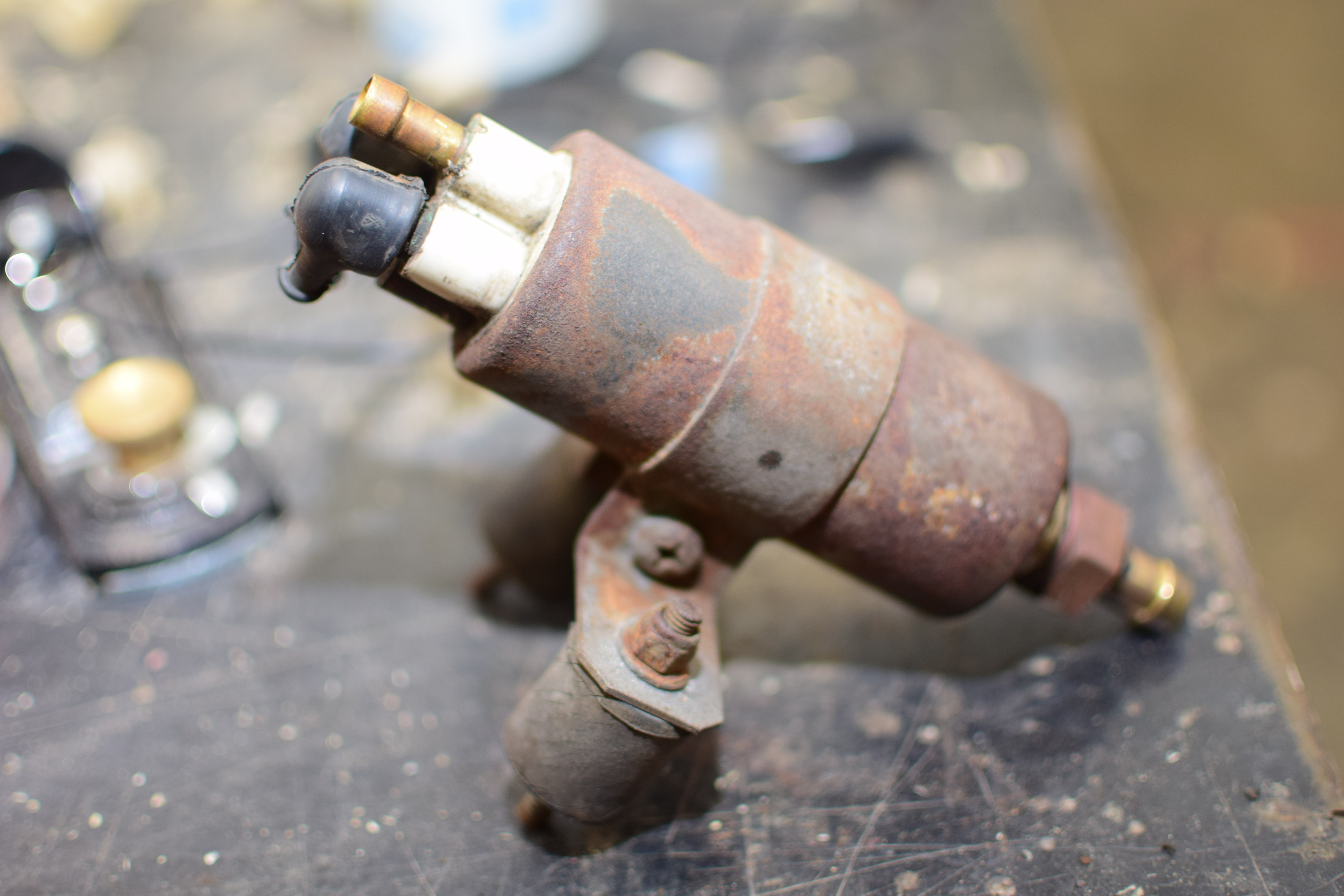With the constraints of the $2000 Challenge budget, the intent was to use the replacement fuel pump to get the car running, but to also attempt to repair the original fuel pump to be used for the competition. Granted, $50 isn’t a lot a money in the grand scheme of things, but it is 2.5% of the budget and that makes it worth the effort. The original fuel lines were actually seeping gasoline, so as mentioned in the last post, before replacing the fuel pump, I wanted to get the lines replaced. Out came the calipers and we determined the following:
| Fuel tank to filter/pump | 12mm or 1/2″ | Gates 27006 | 2ft | $3.69/ft | O’Reilly |
| Fuel pump to hard line/underhood | 8mm or 5/16″ | Gates 27003 | 5ft | $2.99/ft | O’Reilly |
| Vacuum lines | 5.5mm or 7/32″ | Masterpro WV0732 | 6ft | $5.99/ 6 ft | O’Reilly |
| Intake to brake booster vacuum | 15/32″ | Gates 27231 | 2ft | $3.49/ft | O’Reilly |
All-in, that should be around $35 (plus tax) worth of new hoses. The fuel lines I don’t trust because they’re old. The vacuum lines I don’t trust because I can see that they’re either missing or cracked. I may wind up needing more of the 7/32″ vacuum line than that 6ft roll, but we’re going to start there and see where things end up.
Rather than just bolt the replacement fuel pump to the car, I wanted to attempt to isolate it from vibration as much as I could. To that end, I wanted to get the rubber isolators off of the original pump, so I brought the whole thing over to the workbench.

While it was sitting there, we pulled the jumpbox out of the back of the Merc and hooked it up to the pump to see if it would run. At first, there was nothing from the pump, but one gentle nudge from a bit of iron pipe and it started humming along! We tried all manner of additional vibration and movement on the pump to see if it would stop again, but it seems like it’s going to keep going!
The new plan is to keep the replacement fuel pump and get it all built up and ready to install. The inlet will need to be adapted – the line from the tank is 1/2″ while the inlet on the new pump is 5/16″ – and I’ll need to get some new rubber isolators and some long bolts. Basically, I want it ready to install with minimal work in the event that the fuel pump dies again, but I think the pump was simply stuck from sitting and has been revived.